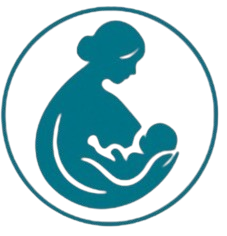Complex anomaly surgery in pediatrics refers to highly specialized surgical procedures performed to correct severe congenital (birth) defects or multiple organ anomalies. These surgeries often require a multidisciplinary team, including pediatric surgeons, neonatologists, cardiologists, neurosurgeons, urologists, and critical care specialists.
These anomalies may involve multiple organ systems, such as the brain, heart, lungs, gastrointestinal tract, urinary system, and musculoskeletal system, requiring precise surgical interventions.
1. Types of Complex Anomalies & Their Surgical Treatments
A. Congenital Craniofacial & Neurosurgical Anomalies
- Craniosynostosis
- Cause: Premature closure of skull sutures, leading to abnormal head shape and pressure on the brain.
- Treatment: Cranial vault remodeling to allow normal brain growth.
- Encephalocele
- Cause: Brain tissue protruding through a skull defect.
- Treatment: Surgical correction to reposition brain tissue and close the skull defect.
- Spina Bifida & Myelomeningocele
- Cause: Failure of spinal cord development, leaving part of the spinal cord exposed.
- Treatment: Spinal cord repair surgery, often performed soon after birth.
B. Congenital Heart Defects (CHD) – Cardiothoracic Anomalies
- Hypoplastic Left Heart Syndrome (HLHS)
- Cause: Underdeveloped left heart structures, affecting blood flow.
- Treatment: Three-stage surgery (Norwood, Glenn, Fontan procedures) or heart transplant.
- Tetralogy of Fallot (TOF)
- Cause: Combination of four heart defects causing oxygen-poor blood flow.
- Treatment: Open-heart surgery to correct the defects.
- Transposition of the Great Arteries (TGA)
- Cause: Aorta and pulmonary artery are switched, disrupting oxygen circulation.
- Treatment: Arterial switch surgery to reposition arteries.
C. Complex Gastrointestinal (GI) & Abdominal Anomalies
- Esophageal Atresia with Tracheoesophageal Fistula (EA/TEF)
- Cause: Esophagus is disconnected from the stomach and may connect abnormally to the windpipe.
- Treatment: Primary surgical repair to connect the esophagus and separate it from the trachea.
- Congenital Diaphragmatic Hernia (CDH)
- Cause: Defect in the diaphragm allows abdominal organs to move into the chest, compressing the lungs.
- Treatment: Surgical repair of the diaphragm, often requiring ECMO (extracorporeal membrane oxygenation) support.
- Omphalocele & Gastroschisis (Abdominal Wall Defects)
- Cause: Abdominal organs develop outside the body.
- Treatment: Gradual surgical closure to return the organs into the abdomen.
D. Complex Urological & Genitourinary Anomalies
- Bladder Exstrophy-Epispadias Complex (BEEC)
- Cause: Bladder is exposed outside the body due to improper abdominal wall development.
- Treatment: Bladder reconstruction surgery to restore normal function.
- Posterior Urethral Valves (PUV)
- Cause: Obstructive membranes in the urethra leading to kidney damage.
- Treatment: Endoscopic valve removal to relieve obstruction.
- Cloacal Malformations
- Cause: Abnormal fusion of the urinary, reproductive, and gastrointestinal tracts.
- Treatment: Complex reconstructive surgery to separate the systems.
E. Conjoined Twins Separation Surgery
- Challenge: Involves multiple organ systems (heart, liver, intestines, brain).
- Treatment:
- Pre-surgical planning with 3D imaging & simulation.
- Staged surgeries to separate organs and reconstruct individual body systems.
2. Advanced Surgical Techniques Used in Complex Anomaly Surgery
- Fetal Surgery
- Some anomalies, like spina bifida and twin-to-twin transfusion syndrome, can be treated before birth to improve survival rates.
- Minimally Invasive & Robotic-Assisted Surgery
- Reduces surgical trauma, pain, and recovery time in certain cases (e.g., esophageal atresia, urological defects).
- Tissue Engineering & Regenerative Medicine
- Stem cell therapy & 3D-printed organs are being explored for bladder reconstruction and airway defects.
- Extracorporeal Membrane Oxygenation (ECMO)
- Provides artificial heart-lung support for babies with severe lung or heart defects before or after surgery.
3. Post-Surgical Care & Long-Term Management
A. Intensive Care & Monitoring
- Many babies need NICU (Neonatal Intensive Care Unit) or PICU (Pediatric Intensive Care Unit) support after surgery.
- Ventilator support, feeding tubes, and intravenous nutrition may be needed initially.
B. Multidisciplinary Follow-Up
- Growth & development monitoring to check for neurodevelopmental delays.
- Physical therapy & rehabilitation for motor function recovery.
- Lifelong monitoring for conditions like heart defects, kidney issues, and gastrointestinal function.
4. Advances in Complex Anomaly Surgery
- 3D Imaging & Virtual Surgery Planning – Allows precise mapping before surgery.
- Gene Therapy for Congenital Disorders – Under research for treating genetic anomalies.
- Artificial Organ Development – Efforts in growing bioengineered tissues for transplants.


